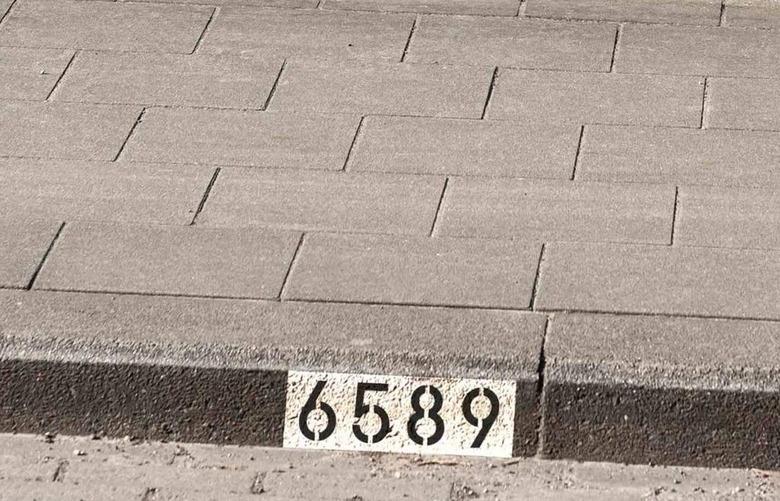How To Make Your Curb Numbers Extremely Reflective At Night
We may receive a commission on purchases made from links.
Painting your house number on your curb can be life-saving when it comes to speedy arrival from first responders of any kind. But there's no sense in painting your curb if it's not visible at night. Highly reflective numbers are a game changer for nighttime visibility, but it takes doing the job right and maybe even another product beyond reflective paint. It's all very manageable, though.
Get Permission for Curb Painting
Get Permission for Curb Painting
Without a doubt, curb numbers for houses is just smart thinking but never presume that smart thinking prevails locally. Check with bylaws and your homeowners' association regarding whether you're allowed to paint the curb, which you probably are, but there could be stipulations.
Most communities require curb numbers within 3 feet of the driveway, more than 3 inches in height, and in high-contrast colors. Smart cities, like Round Rock, Texas, want safer communities, so their libraries offer a curb-painting kit complete with paint, which all cityfolk can use for marking their curbs. People in cities like Scottsdale, Arizona, can request them from city hall.
Housing associations can be notoriously complicated. If you receive resistance, point out that curb numbers help the fire department to respond quicker, which could save lives and community homes.
Things Needed
-
Bristle brush
-
Wet mop
-
Masking or duct tape
-
Paper
-
Nonreflective paint for the background
-
Reflective paint for the stenciled numbers
-
Paper towels
-
Glass beads (optional)
-
Glue (optional)
Painting Curbs for High Visibility
Painting Curbs for High Visibility
The steps for high-visibility curb numbers do not vary: You just need to use a reflective paint or you need to cover the paint with glass beads — the kind used to make road markings so luminous at night — which costs much more but will be more visible in the long term. As you'll be using spray paint, you should work on a day with no wind. Warmer weather gets the job done faster.
This procedure presumes that you have concrete curbs. If you have asphalt curbs, then you will need to use specific paint types that adhere to asphalt, like acrylic paints.
1. Clean the Curb for Painting
You will get the best adhesion and extend the life of the numbers by cleaning the curb first. Use a bristle brush or broom to scour the curb and loosen particles. Then, wet mop it thoroughly and allow it to dry completely.
2. Prepare the Stencil and Painting Area
Tape the curb with masking or duct tape — whatever will stick long enough. Frame out a box large enough for your address, usually 14 to 18 inches long by about 6 inches high. Leave the center bare. Then, use paper (such as newspaper or anything you want) to create a mask around the framed box to prevent overspray. Tape the paper around the entire box like a paper matte around a painting.
3. Paint the Background Color
In short, smooth motions all in the same direction, paint the box base coat for the background. Once you have a base, apply thicker paint for full coverage. Allow it to dry for the manufacturer's recommended time. Note that the background paint should not be reflective.
4. Stencil Your Address on the Curb
With the base dry, center your number stencil — preferably with 4-inch-high numbers — in the painted box and tape it in place. If your curb is curved, you may have to use a stick or something to hold the center of the stencil flush against the curb while you paint the number. Again, go over the stencil with short, smooth strokes until a base is set and then apply thicker paint. It's wise to let the numbers dry for the recommended time and then apply a second coat.
5. Remove the Paper Mask
As soon as you're finished, wipe your stencil dry with paper towels and save it for touch-ups every year. Allow the paint to dry a bit before you remove the stencil so it's less likely to drip or make a mess. Pull up all the tape and paper. That's it!
6. Apply Luminous Glass Beads
If you find that your reflective spray paint is not sufficient for night visibility, then it's easy to apply a layer of glass beads on top of your painted number. Just brush a coat of glue over the individual numbers — not the whole painted section — and then pat on a thin layer of glass beads and allow them to dry. This can be easily touched up each year for maximum effect. Keep the paint touched up too, as faded numbers won't do the job.
